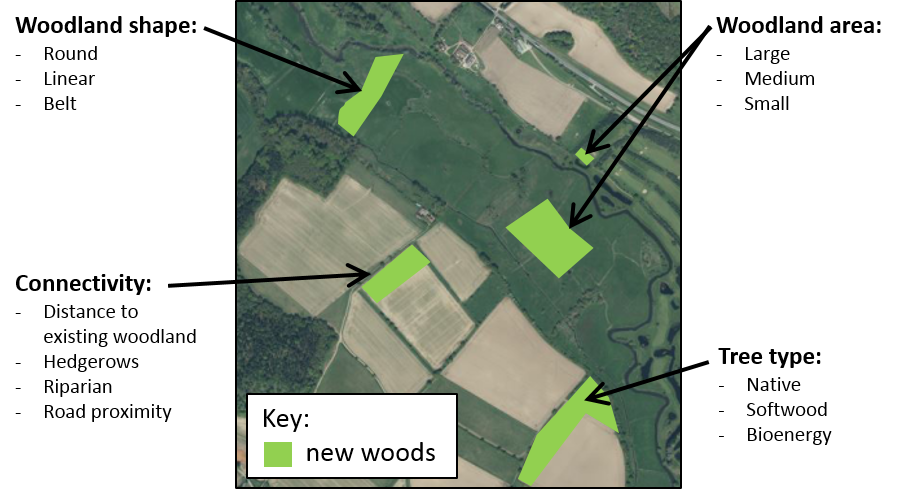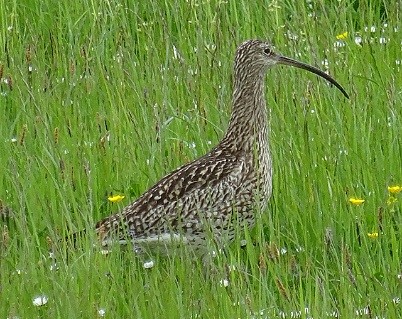How many trees should we plant and where?
Modelling the landscape-level benefits and biodiversity consequences of woodland creation.
The UK Government has pledged to increase tree planting to 30,000ha per year by 2025.
Woodland creation can bring many benefits, such as carbon sequestration, flood alleviation and recreation. However, it also has big consequences for biodiversity.
Listen to Emma Gardner introduce the project on this YouTube video
Woodland-dependent species can benefit from increased habitat and connectivity through woodland creation. But open-habitat species can suffer from loss of habitat/connectivity and even increased predation, if woodlands are created on areas of open habitat that they depend on. Many open-habitat species, such as curlew, are of high conservation concern, so it’s essential that woodland creation intended to benefit people doesn’t negatively impact these open-habitat species.
Better tools are needed that allow us to simultaneously assess the human benefits and biodiversity consequences of woodland creation. These tools must realistically capture the way multiple species use landscapes. Only then can we identify locations where woodland creation will provide maximum benefits to people, while still balancing the needs of other species.
This fellowship project will build a novel, multi-species biodiversity model and link this to physical hydrological and carbon storage models to quantify the multiple benefits and trade-offs of woodland creation in agricultural/peri-urban landscapes.
The human benefits and biodiversity consequences of woodland creation depend on many factors including both the properties of the woodland itself and the surrounding landscape context.


An open-habitat species – curlew. Image credit: Anne Burgess.
The biodiversity model will simulate the daily foraging behaviour of six species groups, chosen to represent a range of mobility and habitat requirements. It will be co-developed alongside conservation NGOs and parameterised with the latest citizen science datasets to ensure its predictions are reliable and realistic.
The biodiversity model will then be linked to hydrological and carbon storage models currently being developed by the Landscape Decisions Programme’s AgLand Project. This ensures the combined model can simultaneous assess the contribution of woodland creation towards both Net Zero and the creation of successful Nature Recovery Networks.
Working closely with project stakeholders, the combined model will be used to test woodland creation scenarios and so generate spatially-explicit woodland creation recommendations for five specific study areas. Novel mathematical techniques will then be applied to derive overarching general guidelines from the simulations, which will be co produced alongside stakeholders and a written communications expert. Finally, the combined model itself will be converted into an accessible online tool, which stakeholders can continue to use after the project finishes.
This project will be led by Dr Emma Gardner, a Research Fellow on the Landscape Decisions Programme based at the UK Centre for Ecology and Hydrology. Emma is a multidisciplinary researcher who applies mathematical and computational expertise from the physical sciences to understand ecological systems and help inform land management and policy.
Project contact
Dr Emma Gardner
emmgar@ceh.ac.uk
